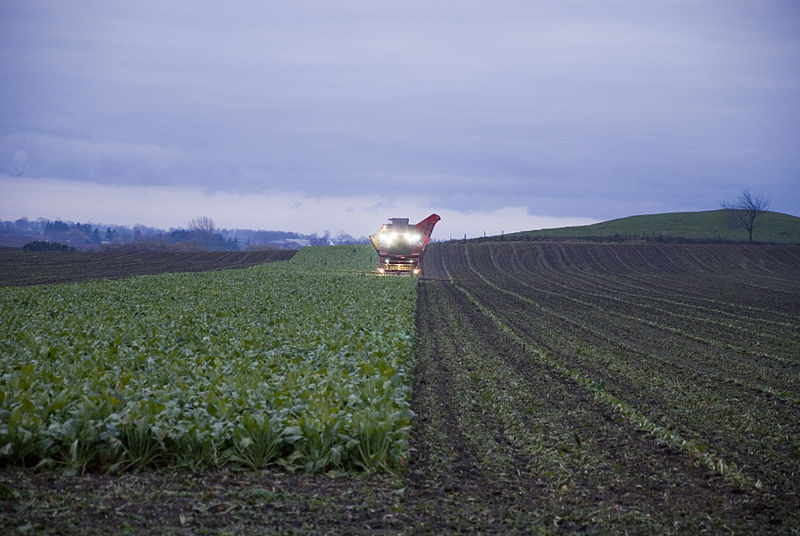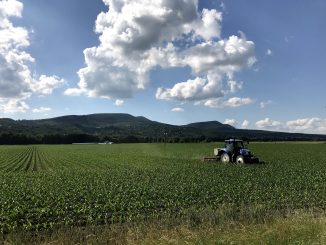A recent study published by the European Commission puts into perspective the two agricultural models, organic and conventional, highlighting which one gives more profit for EU farmers. The study took into account various economic aspects, analyzing factors from production costs and farm efficiency to product price and subsidy level. The study has it limits though, as only milk and grain farms from Central and Western European countries are taken in consideration. Their conclusions are still interesting to review.

In the surveyed countries, organic agriculture brings an equal, or in some cases, even higher income than conventional farming. This is mainly due to the the higher subsidies given for organic farming.
When agricultural input costs like pesticides, fertilizer or fuel for the maintenance of crops are taken in consideration, organic agriculture unveils some of its bonuses. Being a more extensive practice, there is not much room or cost for expensive chemical fertilizers and pesticides. Analyzing fuel costs of agricultural works shows no big difference though. Mechanization changes the organic practices, and where efficiency wins, environmental risks start to occur.
Organic agriculture uses more workforce than its conventional counterpart. EU Commission data shows that one agricultural worker is needed for every 40 hectares of organic land, while conventionally one could work 46 hectares. Milk farms show the same relation: one worker for every 17 milk cows raised organically and one worker for 21 conventionally raised cows.
Intermediary costs for organic crops are also lower than for conventional cultivation. In an average, for a hectare of organic field a farmer spends 860 Euro every year, while the price for the maintenance of a hectare of crops grown conventionally goes up to 960 Euro. These costs involve fertilizers, seeds, fuel and oil consumption of the agricultural machines.
The lack of chemical stimulation gives a lower yield for organic agriculture. Farmers harvest between 5-8 tonnes for a hectare of conventional wheat, but only 2-3 tonnes of organic wheat per hectare. Milk farms show the same ratio: 7 tonnes of conventional milk per year, but only 5.5 tonnes of milk when it comes to organic farms. The low yield is compensated nonetheless by the selling price, which in an average is 90 Euro higher per tonne of milk, than the conventional.
Subsidies play a leading role in the profitability of organic farms. European funds and state support for western EU organic farmers represents 59% of their income, while conventional farmers get 54% of their profit from subsidies. France is the exception, where state support represents 60% of the conventional producers income, and 40% of the organic ones.
The main conclusion of the study is that there are small differences when it comes to money. In the analyzed countries the average profitability per work unit is 28.114 Euro/year for organic farms and 27.836 Euro/year for conventional farms. Regarding vegetable farms, the average income is 29.097 Euro/year for conventional farms and 28.270 Euro/year for organic farms. In the milk sector the case is different: 25.734 Euro/year at the conventional farms, less than at the organic farms where the average is 27.853 Euro/year.
Big differences are visible when we rise above financial calculations and look into the environmental and social benefits organic agriculture brings:
- Increasing yields in the long run through the use of affordable inputs largely based on local biodiversity;
- Improving livelihoods and food security;
- Reducing the financial risk by replacing expensive chemical inputs with locally available renewable resources;
- Integrating traditional farming practices;
- Providing much greater resilience of the farming systems in times of climate extremes such as drought and heavy rains;
- Improving human health and maximizing environmental services;
…and much more.
RECENT POSTS BY ATTILA SZOCS:
- Organic vs. Conventional agriculture – where’s the profit?
- FAO Conference: peasant rights on the table!
- Ukraine’s Land Struggle with Russia
- The irony of national markets: cheap exports expensive imports
- Land laws might change but the issue stays the same
- Romania: GM Maize 1507′s Future Breeding Ground?
- The EU Seed Market Myth




